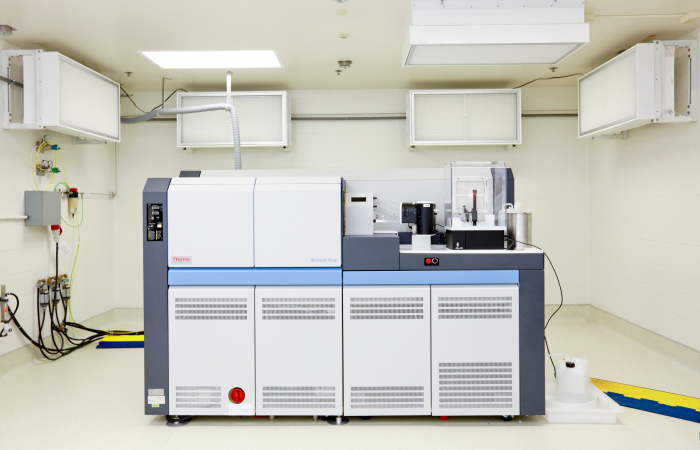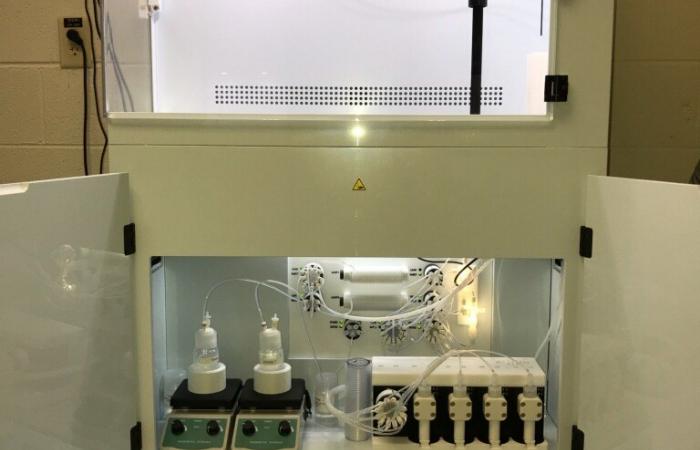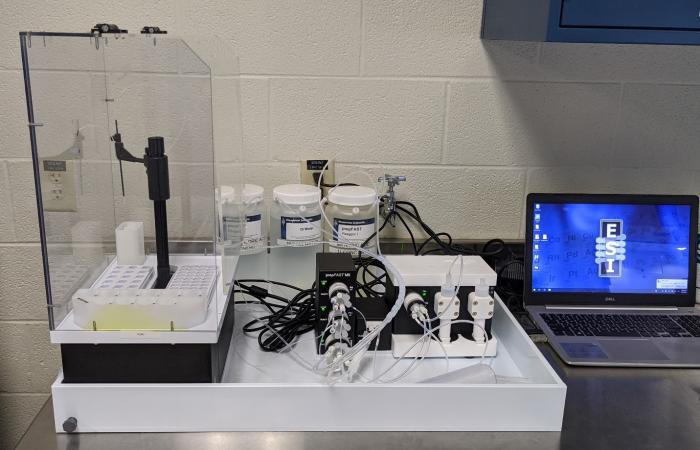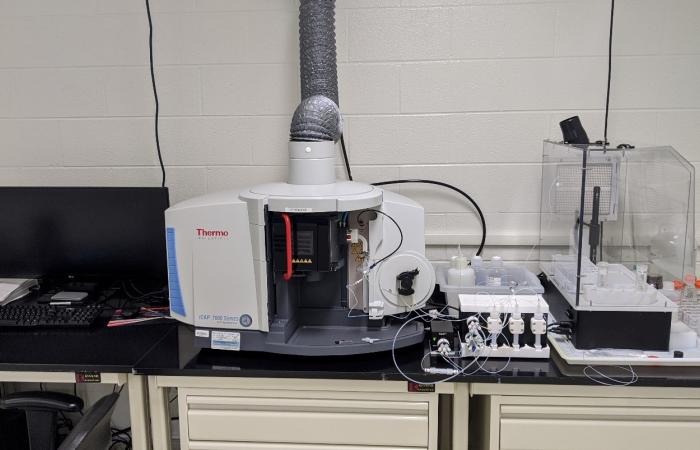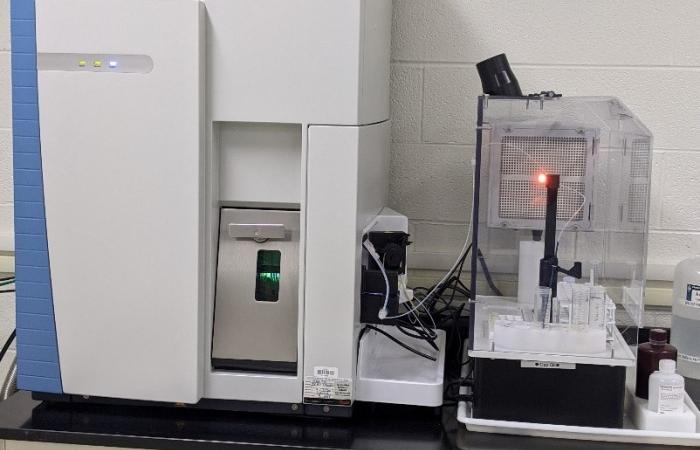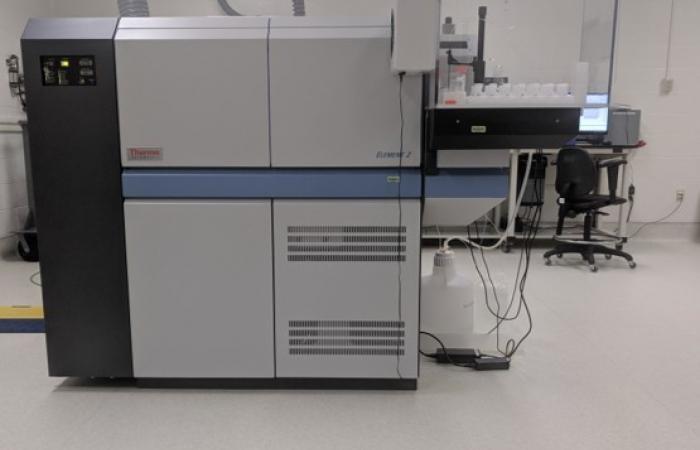MC-ICP-MS:
The NACIL group houses three Multi Collector – Inductively Coupled Plasma – Mass Spectrometer (MC-ICP-MS) systems from Thermo Fisher ScientificTM’s venerable Neptune® series of instruments. These MC-ICP-MS systems enable high resolution isotope ratio measurements across nearly the entire periodic table, and their unparalleled combination of sensitivity, flexibility, and resolving power sets the NACIL group apart with regard to its MC-ICP-MS analytical capabilities.
SEM:
The NACIL group houses a Hitachi S-3400N® Scanning Electron Microscope (SEM) equipped with an Edax® Energy Dispersive Spectroscopy (EDS) system, as well as supporting instrumentation (e.g. carbon coater). The combined nanometer scale imaging (SEM) and single-micron scale chemical analysis (EDS) capabilities have proven useful in situations where sub-µm scale heterogeneity within a sample potentially impacts the interpretation of high-precision isotopic and elemental data collected on bulk-dissolved samples.
prepFAST-SR and microFAST-MC:
Automated separation systems – the prepFAST-SR and microFAST-MC – were designed in cooperation with Elemental Scientific Inc. (ESI) and are now commercially available. The SR units are constructed of polypropylene and feature an ULPA filtered clean environment for sample handling. The separation scheme can utilize up to 9 different regents that are accurately dispensed through fluoropolymer tubing throughout the system with syringe pumps. The SR system can pack two columns with a variety of resins for various sample streams.
Current separation methods include:
- Ultra-trace (sub-ng) separation of uranium and plutonium from environmental samples
- Uranium and thorium separation for age dating
- Plutonium and americium separation for age dating
- Bulk uranium (mg quantities) and trace plutonium separation.
- Trace actinide separation in bulk uranium (mg quantities) material
The microFAST-MC system utilizes a single column to separate trace elements from bulk U, Pu, and Th (mg quantities) for analysis to improve quantification limits and reduce matrix interference. These systems have demonstrated equivalent results to tradition analysis, while providing unattended overnight separations on a variety of samples.
Thermo Scientific ICP-OES
The iCAP 7400 is equipped with an Echelle spectrograph and employs a solid-state charge injection device (CID) detector for the simultaneous analysis of multiple wavelengths (166-847 nm). The Echelle spectrograph can provide resolution of ~7 pm at 200 nm and is temperature controlled (0.1° C) for enhanced in-run stability. This ICP-OES has the ability to axially or radially view the plasma if sensitivity is warranted (axial) or the sample is in a complex matrix (radial). Ultimately, detection limits for this instrument is ppb-ppm range, pending analyte and can quantify up to % levels of trace elements.
Thermo Scientific Triple Quadrupole ICP-MS
The iCAPTQ is a quadruple-based inductively coupled plasma – mass spectrometer (ICP-MS). This ICP-MS is unique such that up to four collision/reaction gasses can be employed to improve the analysis of elements that are commonly hindered by isobaric and molecular mass-based interferences. Typical detection limits for the iCAPTQ ICP-MS range from ppt-ppb, pending analyte and analysis mode.
Thermo Scientific Element 2
The Element 2 is a magnetic sector-based inductively coupled plasma – mass spectrometer (ICP-MS) often referred to as a “high-resolution” ICP-MS. This ICP-MS can operate in 3 different mass resolving modes, including low (>300 m/Δm), medium (>4000 m/Δm) and high (>10,000 m/Δm) to assist in eliminating isobaric and molecular interferences. This ICP-MS offers excellent sensitivity, such than many elements across the periodic table can be determined at pg mL-1 concentrations. In addition to sensitive measurements, Element 2 can make high precision (<1% relative standard deviation, RSD) isotope ratio measurements.


